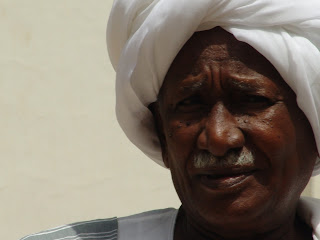The International Crisis Group (ICG) recently released a report on the war in South Kordofan, the first as it said in a series of reports on the on-going conflicts in Sudan’s peripheries. In their introduction the author(s) offered the disclaimer that the ICG “could not obtain access to government-controlled areas in Sudan but has tried to reflect the government’s views as much as possible, including by interviewing individuals in other locations”. The disclaimer, it must be noted, does not feature in the preceding ICG report on Sudan released in November 2012, ‘Major Reform or More War’, the footnotes of which are rich with references to interviews conducted by the ICG in Khartoum as late as November 2012.
The South Kordofan report speaks of a military stalemate between government forces and the Sudan Liberation Army/Movement in North Sudan (SPLA/M-N), a description that rings true, and a humanitarian crisis in the area secondary to the conflict, but intensified by the government’s resort to targeting communities suspected of harbouring rebel forces, an established strategy that the report rightly refers to as “counter-insurgency on the cheap”. The model for expensive counter-insurgency, it follows, would be the French campaign in Mali. After a drill of ‘root causes’ the ICG documents changes in the ethnic dynamics of the conflict. Looking back to distinguished service as a proxy force of the government during the first South Kordofan war (1984-2002) more and more Misseriya combatants are joining the insurgency, says the report. The parent SPLA recruited Misseriya youth in 2006-2007, creating a brigade that started with 2,500 men but eventually dwindled to a battalion of a few hundreds for lack of payments. The SPLA/M-N upon resumption of the war in 2011 managed to recruit a force of 1,000 fighters under the command of a Misseriya brigadier. The Justice and Equality Movement (JEM) also got a cut of Misseriya, the number given in the report is 300 to 400. On the other hand, government efforts to procure the military services of the Misseriya were less successful than before, says the report, because of Khartoum’s failure to deliver on promises of development. The Misseriya, it is understood, have shaken off the ‘false consciousness’ of the past, largely because of the frustration of their aspirations, and have recognized their ‘marginality’ like their neighbours the insurgent Nuba. The same applies to the Hawazma, states the report, but to a lesser extent. They too have started to shift sides, but the numbers are more humble, 300 to 400 Hawazma combatants for the SPLA/M-N and only a few for the JEM.
The report, as befitting one written without access to government-controlled areas, is silent about why the Hawazma are slower to dispel their ‘false consciousness’ than the Misseriya, despite shared livelihood and frustrations. One reason, probably, is that both are communities and not ethnic armies. The economy of rebel recruitment that the report hinted at but avoided thematising might by way of suggestion offer a more material anchor for a conflict that feeds at its roots from the ‘modern’ treacheries of primitive accumulation and elite turnover compared to the lofty essentialism of tribal drives. Speaking of tribes, the author(s), possibly to pepper up the text, offered the reader eye witness accounts of the outbreak of fighting between Abd al-Aziz al-Hilu’s troops and government forces on 5 and 6 June 2011. The most catchy was the scene in Um Durein, where a force of five hundred Popular Defense Forces (PDF) fighters from the Hawazma “were accompanied by Hawazma women with their tobs (loincloths) tied to their belts (a sign of war)”. “Some were hakkamat [singers] and were singing ‘kill the slaves’ to encourage the men,” the report quotes a witness from al-Kutang displaced by the fighting. Tobs, as any visitor to Sudan or for that matter anybody lightly educated in the common dress of its womenfolk well knows, are not loincloths. They are tied around the waist, of course, but in the rule to prevent them from falling off the body to the ground, a tendency that they intrinsically have being a whole body wrap with no anchor other than the topography of the female corpus. Whether the tied tob is a sign of war is to say the least debatable. The women who tie tobs around their waists across the country as they go about their daily labour are certainly not signalling war. But then again, the ICG had no access to government-held areas in Sudan and was in no position to judge the nuances of tob-body management.
Tobs aside, the report makes the case for a ‘comprehensive’ negotiation model to address Sudan’s multiple conflicts. Under that title the ICG advised that international actors engage with the Sudan Revolutionary Front (SRF) as a whole instead of with its components, including the SPLA/M-N, individually. Thereby, it is hoped Friends of Syria style, that the SRF would be “forced to evolve from a purely military alliance to a more representative and articulate political movement – from an instrument for war to a vehicle for peace.” Piecemeal deals, it rightly criticized, only stimulate further rebellion with the aim of winning more concessions from Khartoum. The ICG prefers the SRF tob over the loincloth of the SPLA/M-N, and is not particularly fond of Hawazma women, I suppose. To think ‘in’ a comprehensive approach for Sudan’s multiple conflicts it is necessary to think ‘out’ the orientalist cartography of bad ‘Arabs’ and good ‘Africans’ that the ICG’s brackets put on display.




No comments:
Post a Comment